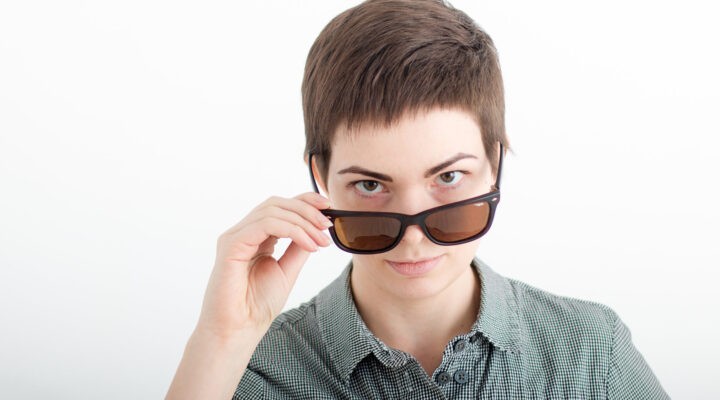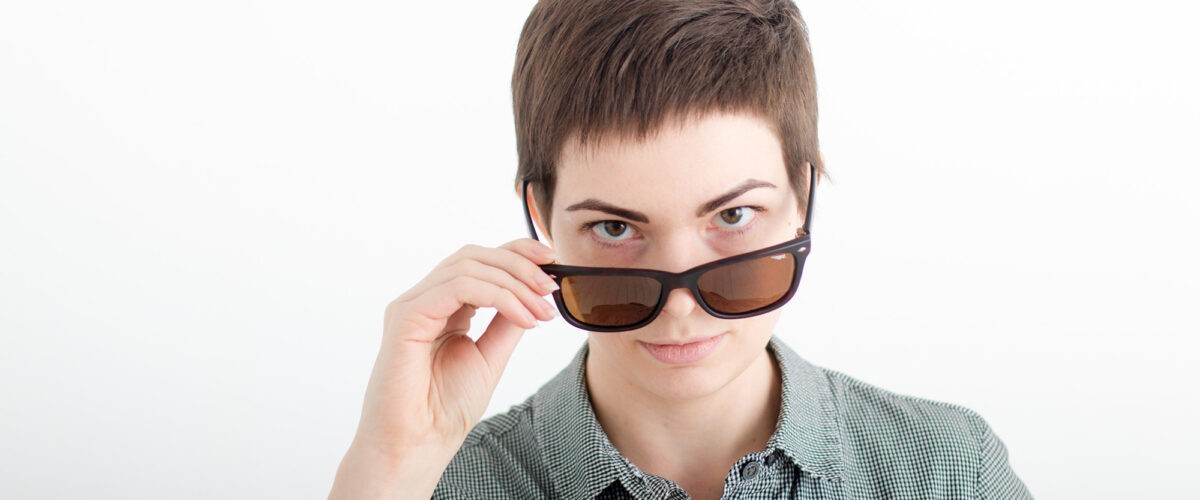“How are you?”
“I’m sorry. What?”
“I said, ‘How are you?’”
“I’m 60.”
“I asked, ‘How are you?’”
“I know.”
We didn’t know we were lip readers, until we started wearing masks. We thought our hearing was fine, until every word was muffled. We didn’t know how much we needed to see each other’s faces, until we couldn’t. We assumed communication was what we heard, but we need to look one another in the eye.

Brett Younger
Even before COVID, an increasing number of psychologists were helping people who have trouble making eye contact. (Sometimes this is related to autism — which raises its own set of complicated, difficult issues.) Psychologists say avoiding eye contact is a serious problem that makes us less welcoming. People will be less likely to remember your face, recall what you said or believe what you are saying.
Psychologists offer suggestions like starting small with people who don’t make you feel anxious. Look at a spot directly between the other person’s eyes. Try the “triangle method”: Look at one of the person’s eyes for a beat, then the other eye for a beat, and then at their mouth. Repeat. Look away occasionally, so you don’t look creepy.
This bit of advice in Alan Cuncic’s How to Overcome Eye Contact Anxiety seems problematic. He suggests the 50/70 rule. Maintain eye contact 50% of the time when speaking and 70% when listening. That is enough math to make you more self-conscious than you were before you started trying to make eye contact.
People in my hometown are not famous for making eye contact, and this may not be something New Yorkers want to try on the subway, but Michael Ellsberg argues in The Power of Eye Contact that making eye contact with strangers we pass on the street could “transform the urban landscape.”
Ellsberg writes: “Before I started doing this, I would walk around the city and mostly view the other people I encountered as obstacles or annoyances. But once I started doing it — once I started looking into the windows of hundreds of people’s souls each day — the whole scene shifted. I suddenly saw so much beauty out there, so much sadness. So many heavy burdens, so much joy. The city became a symphony of emotion — all from this simple shift.”
Counselors often ask couples to stare into each other’s eyes as a way of opening themselves up. Two people in conversation make eye contact 30% to 60% of the time, “but couples who are in love look at each other 75% of the time,” according to Cheryl Murphy in Learning the Look of Love.
“If we look people in the eye, we might be surprised at what we see.”
If we look people in the eye, we might be surprised at what we see. If we look into the eyes of a person with a disability, we will see more than a disability. If we look into the eyes of a preschooler, we will see the need for educational opportunities. If we look into the eyes of a woman who is paid less for the same work, we will see the evil of sexism.
If we look into the eyes of a father who has lost a son to violence, we will see the need for gun legislation. If we look into the eyes of a police officer, we will see how hard their job is. If we look into the eyes of an ex-con who cannot get a job, we will see that we have to work for more thoughtful approaches. If we look into the eyes of someone who has been robbed, we will see how much we need to care for one another.
If we look into the eyes of a transgender Christian, we will see that the church has to do more. If we look into the eyes of a committed Muslim, we will see that good people have different experiences. If we look into the eyes of a lonely person, we will see how much everyone needs friends.
You are eating dinner with someone you love, your partner, your parent, your child, your friend or someone you wish was a friend. You talk about the weather, “Is it my imagination or have the forecasters gotten worse at their job?” You talk about chocolate. “Why isn’t the blue M&M the depressed one? It’s such a missed opportunity.” You talk about Wordle. You understand the appeal, but how long do we have to keep sharing our scores? Nothing you say is particularly interesting.
But then there is a moment, when you look into their eyes, and really see them, and know they are a child of God. In that moment, you are surprised to hear Humphrey Bogart saying: “Here’s looking at you, kid, because when we look at each other, it can be the beginning of a beautiful friendship.”
Brett Younger serves as senior minister at Plymouth Church in Brooklyn, N.Y.
Related articles:
Compassion is the work of seeing, of making invisible people visible | Opinion by Doyle Sager
White hysteria, Critical Race Theory, and eyes that dare not see | Opinion by David Gushee
In our neighborhood, ‘eyes on the street’ takes on deeper meaning | Opinion by Greg Jarrell


